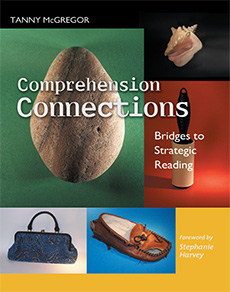 Enter nesting dolls. While wandering around admiring the chachkies at the annual Greek Festival in town a few weekends back, I spotted them. The most beautiful sets of nesting dolls I'd ever seen. And there were hundreds of them! That's when it hit me. I must have these! I had been reading up on synthesis preparing for teaching the unit, and remembered a great concrete lesson in my copy of Comprehension Connections. {I remember thinking "Where in the world do you get nesting dolls?!" and put that lesson on the back burner.}
Enter nesting dolls. While wandering around admiring the chachkies at the annual Greek Festival in town a few weekends back, I spotted them. The most beautiful sets of nesting dolls I'd ever seen. And there were hundreds of them! That's when it hit me. I must have these! I had been reading up on synthesis preparing for teaching the unit, and remembered a great concrete lesson in my copy of Comprehension Connections. {I remember thinking "Where in the world do you get nesting dolls?!" and put that lesson on the back burner.}I must have spent 30 minutes at that booth, turning them over in my hands trying to pick the best set for the best price. Should I get a set with 3 dolls? 5 dolls? A set with Star Wars characters, or the more traditional matryoshka? I walked away with a beautiful set of matryoshka to share with my kiddos in our synthesis unit of thinking.
To introduce synthesis on the first day I displayed the nesting dolls at our reading workshop spot and asked my kiddos "How do these nesting dolls represent your thinking?" I gave them plenty of time to think before asking them to turn and talk with their partners.
- "It's like the little one is a beginning thinker, like a baby, and the big one is an advanced thinker"
- "My thinking grows bigger and better as I read"
- "Our schema helps our thinking grow"
- "As we get older our thinking gets more advanced"
- "My thinking grows like a seed"
- "All of the thinking ties together into one by adding more to get a big idea"
- "We combine all of our learning to gain knowledge"
- "We start with small thinking about the text, then to a big idea about the whole text"
- "Putting it all together to get new thinking"
- "Our old thinking is always there"
 I've been using the dolls to refer back to our thinking as we dig into the unit of synthesis. On the second day we began a close read of Seymour Simon's Sharks. I showed my kiddos just the cover of the text as we discussed how readers use their schema and questioning to synthesize ideas. Hollywood's portrayal of sharks through movies like Jaws and Shark Week are a huge influence on our schema. We linked our schema to questions about sharks.
I've been using the dolls to refer back to our thinking as we dig into the unit of synthesis. On the second day we began a close read of Seymour Simon's Sharks. I showed my kiddos just the cover of the text as we discussed how readers use their schema and questioning to synthesize ideas. Hollywood's portrayal of sharks through movies like Jaws and Shark Week are a huge influence on our schema. We linked our schema to questions about sharks.-Schema: People are so terrified of sharks that some even refuse to get in the water at the beach in fear of being attacked.
-Question: How many shark attacks really occur each year worldwide, and is it enough to justify these fears?
As we continued to read, we focused on how our schema led to questions about the information about the text, as well as realizing we had misconceptions about sharks and had to adjust our thinking. Hello synthesis!
Our next moves:
- read another text by Seymour Simon and begin to synthesize ideas about the author
- synthesis of themes in expository texts
Also, here's a freebie for you and your students as you embark on this journey of synthesis! There's also a graphic organizer for your students to use to track their change in thinking. Enjoy!

And for your viewing pleasure, a lesson on close reading that I used to help plan my unit of synthesis. Check out the amazing use of artifacts for students to use to synthesize ideas about gorillas!
Bringing Close Reading and Accountable Talk into an Interactive Read Aloud of Gorillas (3-5) from TC Reading and Writing Project on Vimeo.



I agree, synthesizing seems to be one of the hardest concepts for students to understand. Thanks for the freebie! I am your newest follower!
ReplyDeleteBethany
FabandFunin4th!
I suppose if I had to pick a perfect article, it would be yours. I know no article is perfect, but yours is as close as it gets. Good job.chachkies is the yiddish word for trinkets and collectables, AKA dusk collectors that you would find in an old ladys house.
ReplyDelete